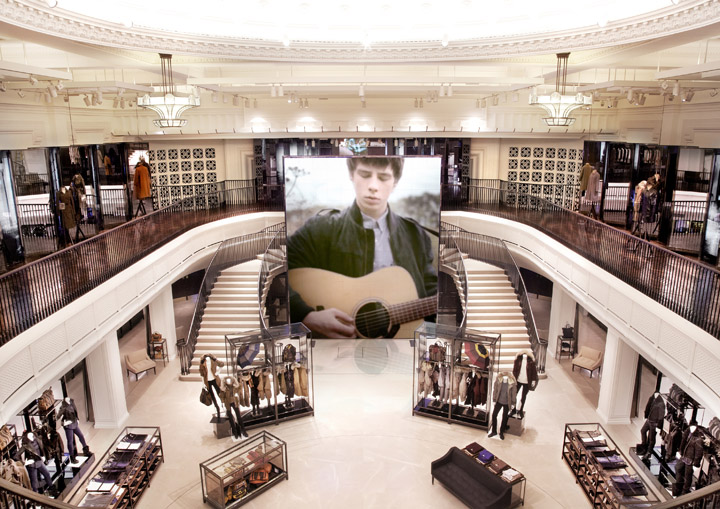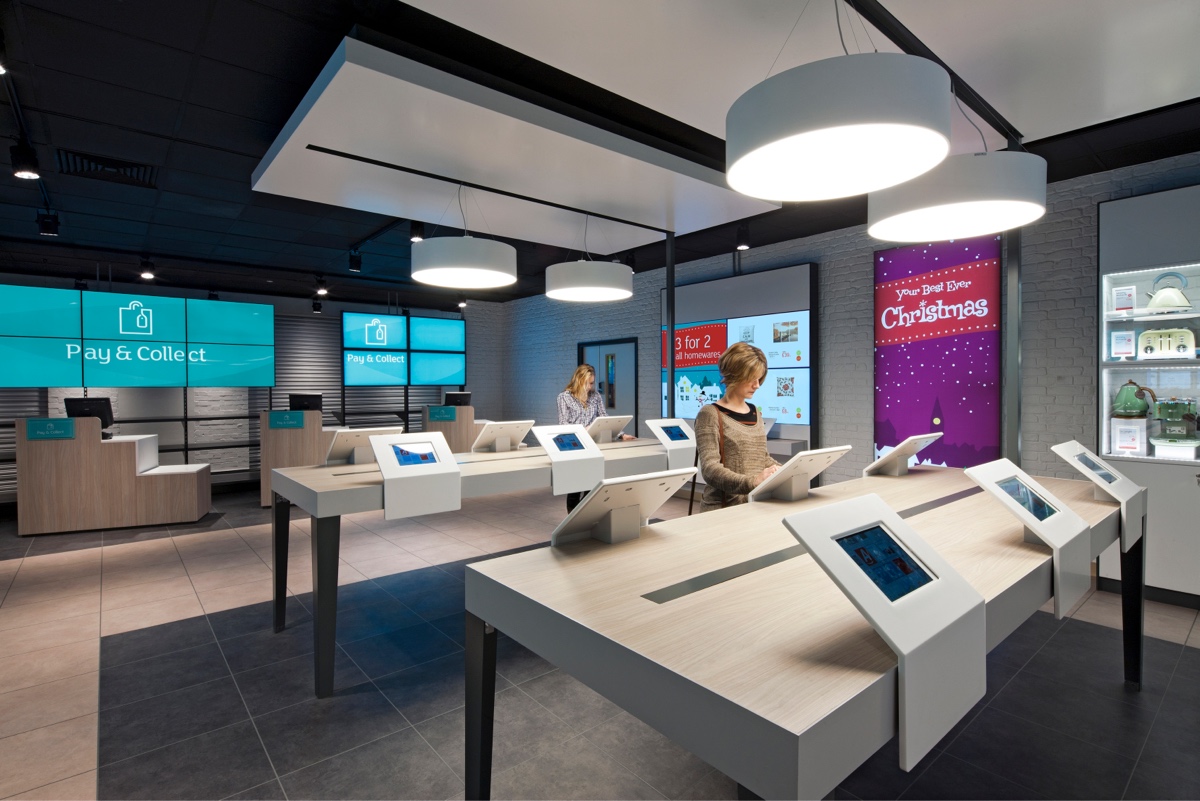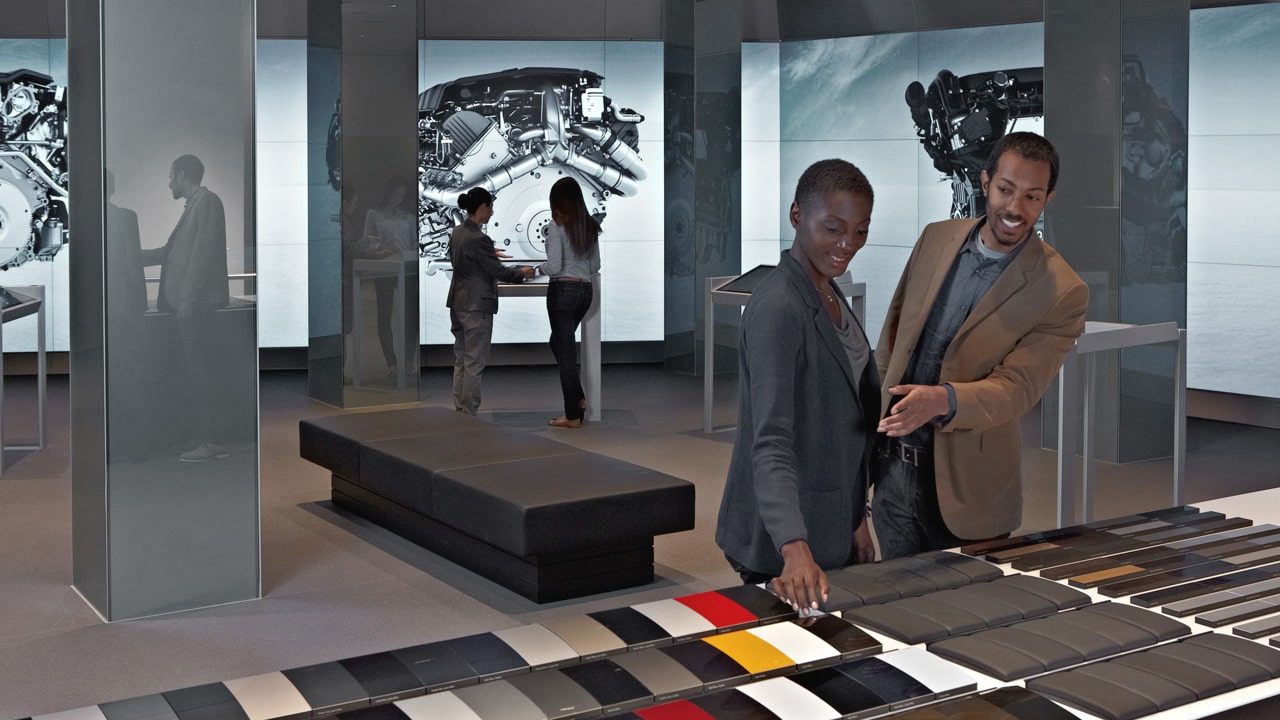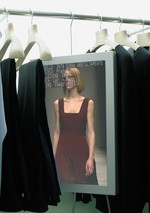The future is now: A look at how digital and physical experiences have merged in retail
What’s the future of retail?
We asked digital natives (aged 16-24) this very question.
Their ideal future shopping experiences include holograms, robot shop assistants and smart mirrors. It may fill older baby boomers with dread to hear that this vision is already here. Let’s have a look at some current examples…
Burberry

Burberry’s futuristic London store has smart fitting rooms, digital personalised customer assistance, an immersive audiovisual experience and more. The store also uses radio-frequency-identification technology (RFID) that recognises and identifies products and accessories selected by customers and turns mirrors into screens with runaway footage and exclusive videos.
Shop assistants are provied with iPads so they have access full details of customers’ purchase history and preferences to enable a more tailored shopping experience. The company knows that people no longer want to be identified as simply consumers, but recognised as students, doctors or mums. When it comes to personalised deals and assistance, they claim it doesn’t feel invasive or a violation of privacy. It feels right. Creative director Christopher Bailey said “We brought burberry.com to life, everything that we do on burberry.com is reflected in the store”
Thomson
Thomson has also opened its first concept store, exploiting technology to enhance the experience of choosing and booking a holiday. You won’t find any travel brochures in this store. A video wall shop window and an interactive map help customers research their holiday.
Argos

Last year, Argos opened 25 new ‘concept stores’. Controversially, iPads replaced the infamous laminated catalogue however the iPads enable customers to watch product videos and read reviews, check stock and add items to their digital shopping basket. They can even order and prepay online with fast track product collection and a voice-driven picking system means faster collection of customer orders.
It’s impressive, however, when we visited a concept store we were asked by a couple of older ladies to help them because they couldn’t work out how to find and order a kettle they’d seen in the catalogue at home.
It’s a reminder that whatever new technologies come into retail, usability is really important to keep digital experiences accessible to all of your customers.
Audi

In the Audi showroom in London little space is left for real cars. Digital panels show different views of cars for sale and information is available through digital devices.
Prada
Prada in New York is not just an exclusive boutique, it is also a gallery and a laboratory space. Experimental technology and innovative displays are installed in store so that customers can experience an interactive shopping experience, simply touching a button to make the glass doors of the changing rooms opaque or seeing their new clothes from various angles on video projections.
Made.com
For those customers who are still a bit sceptical about shopping online without experiencing the real physical product, made.com has found the solution. The brand has three showrooms. On the website customers can browse products and request an appointment to view the product in the showroom; they are then provided with a code to enter (allowing the retailer to track attendance) and a tablet or a computer to ‘scan’ items on show and purchase them online.
Omni channel rules!
The customer experience is forged around being ubiquitously present in the online and offline world, in a constant and fluid interaction between digital and physical reality. Shopping in the high street should become an enrichment experience strictly related to the online one, but including sensory and added value. When it comes to shopping in store it is worth bearing in mind that “instead of creating content, retailers should be creating opportunities for content creation, Instagrammable moments and inspiring experiences” (Sophie Turton, Econsultancy).
The combination of digital and environmental experiences, increased convenience and tailored customer service is incredibly powerful. Nowadays, a continuous experience between physical and digital, is mandatory and it is what your costumers expect from your brand. If retailers have the chance to do this, the time is now.


